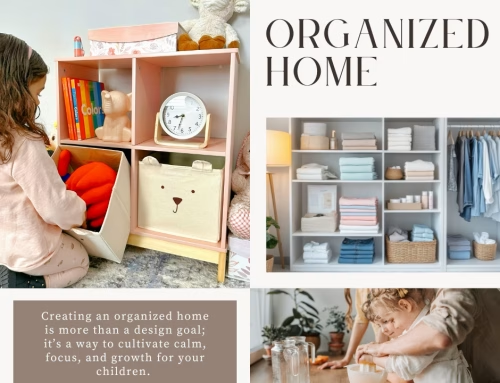In the world of construction and architecture, innovation often lies in the details. One such detail making waves is the introduction of drywall inlay access panels.
Ever heard of drywall inlay access panels? They’re shaking up how we handle plumbing and HVAC systems in buildings. These panels combine practicality and style, giving you easy access to important utilities without ruining your space’s vibe. They also reshape how plumbing and HVAC systems are maintained and serviced in buildings.
Drywall Inlay Access Panels Offer Seamless Room Design
This article will delve into how these panels are changing the game—offering seamless integration, improved serviceability, and long-term savings.
The Rise of Drywall Inlay Access Panels
Maintaining plumbing and HVAC systems in buildings has long been a challenge due to the limitations of traditional access methods. The requirement to dismantle walls, ceilings, or floors for maintenance or repairs not only disturbs the visual appeal of a setting but also results in escalated expenses.
Enter drywall inlay access panels—an innovative solution transforming building maintenance. Designed to merge into the prevailing interior design effortlessly, these panels uphold the space’s aesthetics while furnishing swift and convenient access to concealed plumbing and HVAC components.
Their advantages extend beyond aesthetics, impacting maintenance processes and overall building functionality.
Advantages Over Traditional Methods
In construction and architectural design, stakeholders hold innovations that enhance efficiency and aesthetics in high regard. One such innovation that is turning heads and transforming maintenance practices is the emergence of drywall inlay access panels.
These components play an important role beyond superficial styling. Drywall inlay access panels revolutionize the approach to plumbing and HVAC serviceability in buildings of all types. Let’s delve into the advantages they bring to the forefront over traditional methods.
- Seamless Integration
The charm of drywall inlay access panels lies in their ability to integrate with the built environment seamlessly. Unlike their conventional counterparts, which often stand out as bulky hatches or conspicuous covers, these panels possess a unique power: invisibility.
Through meticulous design, these panels blend with their surroundings—like a wall or a ceiling plane. This fusion of form and functionality allows architects and interior designers to maintain their creative vision without the hindrance of unsightly disruptions. From grand lobbies to intimate residential spaces, these panels offer a discreet and sophisticated way to access concealed systems, ensuring that the aesthetics of the space remain unblemished.
- Enhanced Ease of Maintenance and Repair
Traditional methods of accessing plumbing and HVAC systems often involve a symphony of destruction—walls torn apart, ceilings breached, and floors dismantled. While serving their purpose, these invasive procedures come at a high cost: extended service downtime and potential collateral damage.
In this context, drywall inlay access panels step in as the conductor of a harmonious symphony of efficiency. Opening a discreet panel and accessing the necessary components accelerate maintenance and repair processes. Technicians no longer need to embark on invasive explorations; they can directly address the issue. This operational efficiency reduces disruption to occupants and optimizes the use of resources and time.
- Reduction in Service Downtime
Time is precious, especially in commercial and residential settings where continuous operations are paramount. Traditional maintenance methods often translate to prolonged service downtime—impacting the flow of business, the comfort of residents, and overall building functionality. Drywall inlay access panels like the BA-F1- Drywall Inlay Access Panel, acting as portals to concealed systems, are time-saving components that change the narrative.
These panels empower technicians to diagnose and rectify issues without prolonged disruptions. Whether addressing a malfunctioning HVAC unit or fixing a plumbing leak, drywall inlay access panels provide expedited access. This translates to faster repair turnaround times, ensuring businesses maintain their momentum and residents enjoy uninterrupted living.
- Long-Term Cost Savings
Investing to save is a concept that resonates profoundly with introducing drywall inlay access panels. While their initial installation might involve a financial investment, the long-term savings they deliver far outweigh this cost. Traditional methods often rack up expenses due to labor-intensive processes and the subsequent repairs needed to restore the structural integrity post-access.
In contrast, drywall inlay access panels minimize the need for labor and material-intensive procedures, reducing both immediate and future expenses. The longevity of these panels, combined with their cost-efficient maintenance approach, makes them a cost-effective choice over the long haul.
Applications in Plumbing Serviceability
Drywall inlay access panels are particularly transformative in plumbing serviceability. Concealed pipes and fittings are easily accessible, enabling faster leak detection, streamlined maintenance, and efficient replacement of plumbing components. These panels provide technicians with the means to identify and address issues without causing extensive damage to the building’s structure.
Applications in HVAC Serviceability
HVAC systems are essential for maintaining a cozy indoor environment, and drywall inlay access panels offer a game-changing approach to their serviceability. Hidden ductwork and components can be easily accessed, facilitating quicker troubleshooting and maintenance. This leads to improved system performance, energy efficiency, and air quality.
Installation and Customization
Drywall inlay access panels offer a harmonious blend of functionality and aesthetics, providing easy access to concealed systems while seamlessly integrating into the surrounding architecture. Ensuring a hassle-free experience for professionals and property owners, the installation and customization process aims for straightforwardness:
Step 1: Preparation – Take accurate measurements for the area where you will install the access panel—i.e., dimensions of the opening you need to cut. Consider the location of plumbing or HVAC components you wish to access and ensure that the chosen spot allows convenient reach.
Step 2: Marking and Cutting – Using your measurements, mark the area where you will install the access panel. Double-check your measurements to ensure accuracy. Once labeled, use a utility knife or a drywall saw to carefully cut out the marked area. Take care to create a clean and straight opening.
Step 3: Installing the Frame – Most drywall inlay access panels come with frames that make installation easier. Insert the frame into the opening you’ve cut, ensuring it fits snugly. Many frames have a design that allows for adjustment, enabling you to accommodate any irregularities in the opening. Secure the frame using screws or clips, per the manufacturer’s instructions.
Step 4: Attaching the Access Panel – With the frame securely in place, attach the access panel to it. The design of this panel ensures a precise fit within the frame, guaranteeing a seamless appearance. Fasten the access panel to the frame using the provided fasteners, which can include screws or magnets. Ensure the panel is firmly attached but not overtightened to avoid damaging the surrounding drywall.
Step 5: Finishing and Customization – Once the access panel is in place, it’s time to refine the installation for a flawless finish. Apply drywall joint compound to the seams between the access panel frame and the surrounding drywall. Even out the compound using a putty knife or smoothing tool and allow it to dry. Sand the dried compound gently to create a seamless transition between the panel and the wall or ceiling.
Step 6: Customization – Drywall inlay access panels come in various sizes, shapes, and designs to suit different building types and design preferences. Some panels offer options for customization, allowing you to paint or finish the panel to match the surrounding surface. This step is crucial to maintaining the space’s visual continuity and aesthetic harmony.
Step 7: Final Inspection – Conduct a thorough inspection before considering the installation complete. Check that the access panel opens and closes smoothly without any obstructions. Ensure the frame is securely in place and the finishing touches are seamless and visually pleasing.
Step 8: Utilization – With the drywall inlay access panel properly installed, you now have a discreet and convenient means to access concealed plumbing or HVAC systems. Enjoy the benefits of easy maintenance, quick repairs, and overall enhanced building serviceability.
Conclusion
Drywall inlay access panels are revolutionizing how we approach plumbing and HVAC serviceability. These panels provide quick and efficient access to concealed systems by seamlessly integrating into interior designs. With advantages ranging from improved aesthetics to cost savings and enhanced efficiency, it’s clear that these panels are reshaping the future of building maintenance. As the industry embraces innovation, drywall inlay access panels stand as a testament to the power of thoughtful design in creating more functional and visually appealing spaces.
Other posts you might enjoy:
Benefits of Choosing the Right Access Door





